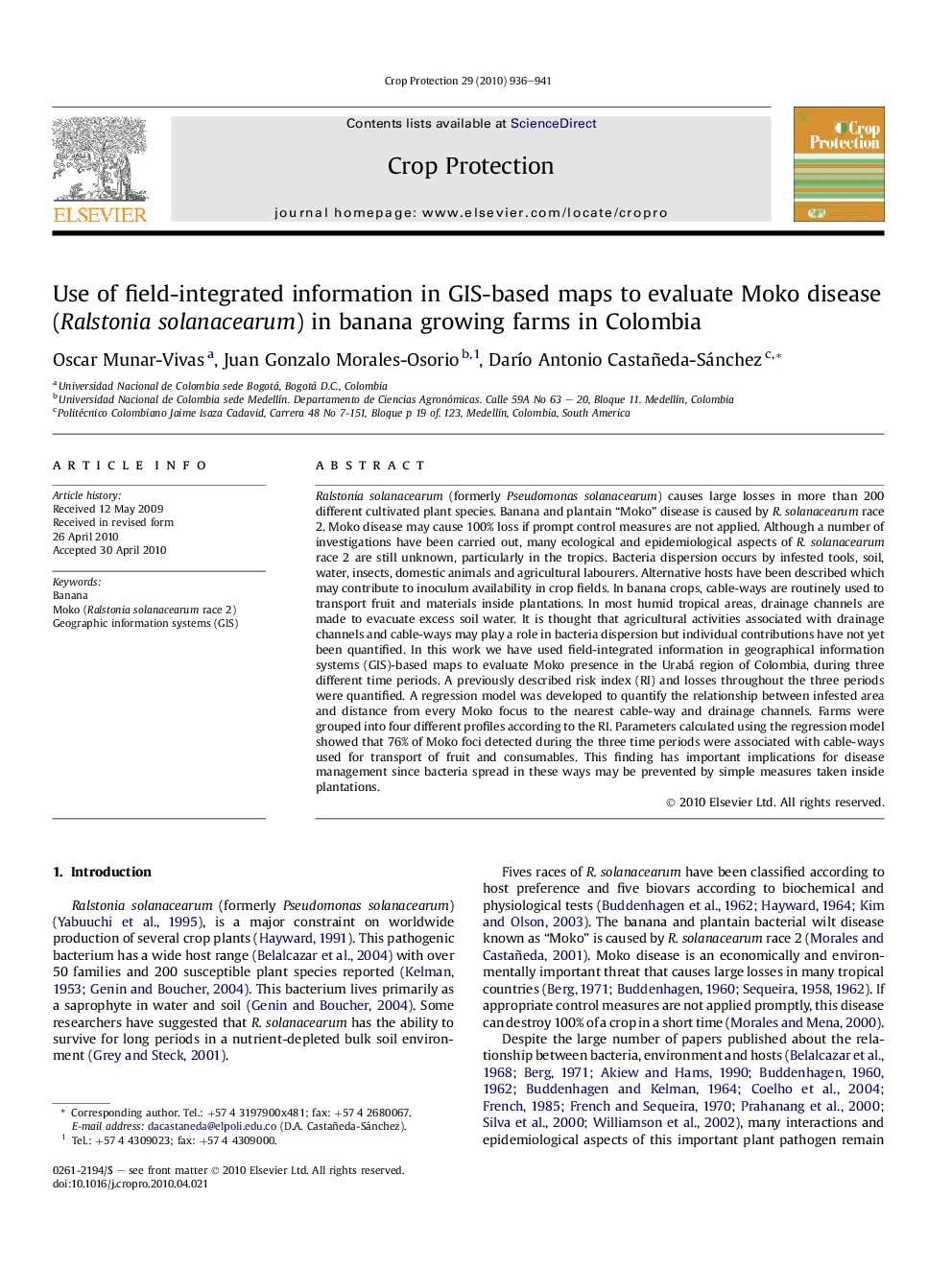| Article ID | Journal | Published Year | Pages | File Type |
|---|---|---|---|---|
| 4506685 | Crop Protection | 2010 | 6 Pages |
Abstract
Ralstonia solanacearum (formerly Pseudomonas solanacearum) causes large losses in more than 200 different cultivated plant species. Banana and plantain “Moko” disease is caused by R. solanacearum race 2. Moko disease may cause 100% loss if prompt control measures are not applied. Although a number of investigations have been carried out, many ecological and epidemiological aspects of R. solanacearum race 2 are still unknown, particularly in the tropics. Bacteria dispersion occurs by infested tools, soil, water, insects, domestic animals and agricultural labourers. Alternative hosts have been described which may contribute to inoculum availability in crop fields. In banana crops, cable-ways are routinely used to transport fruit and materials inside plantations. In most humid tropical areas, drainage channels are made to evacuate excess soil water. It is thought that agricultural activities associated with drainage channels and cable-ways may play a role in bacteria dispersion but individual contributions have not yet been quantified. In this work we have used field-integrated information in geographical information systems (GIS)-based maps to evaluate Moko presence in the Urabá region of Colombia, during three different time periods. A previously described risk index (RI) and losses throughout the three periods were quantified. A regression model was developed to quantify the relationship between infested area and distance from every Moko focus to the nearest cable-way and drainage channels. Farms were grouped into four different profiles according to the RI. Parameters calculated using the regression model showed that 76% of Moko foci detected during the three time periods were associated with cable-ways used for transport of fruit and consumables. This finding has important implications for disease management since bacteria spread in these ways may be prevented by simple measures taken inside plantations.
Related Topics
Life Sciences
Agricultural and Biological Sciences
Agronomy and Crop Science
Authors
Oscar Munar-Vivas, Juan Gonzalo Morales-Osorio, DarÃo Antonio Castañeda-Sánchez,
